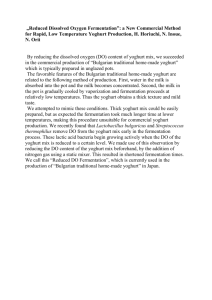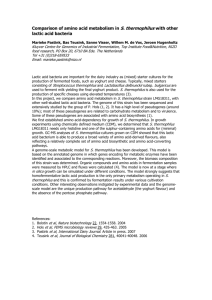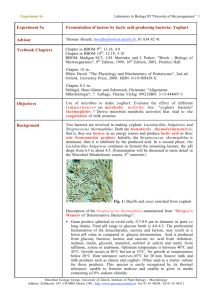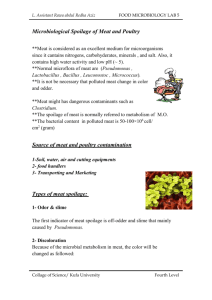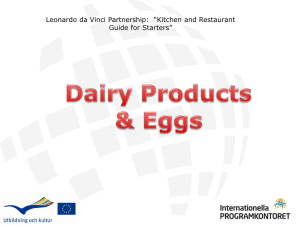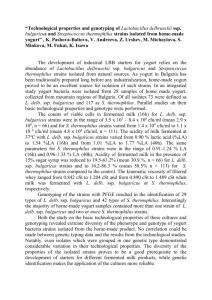4-lecture
advertisement
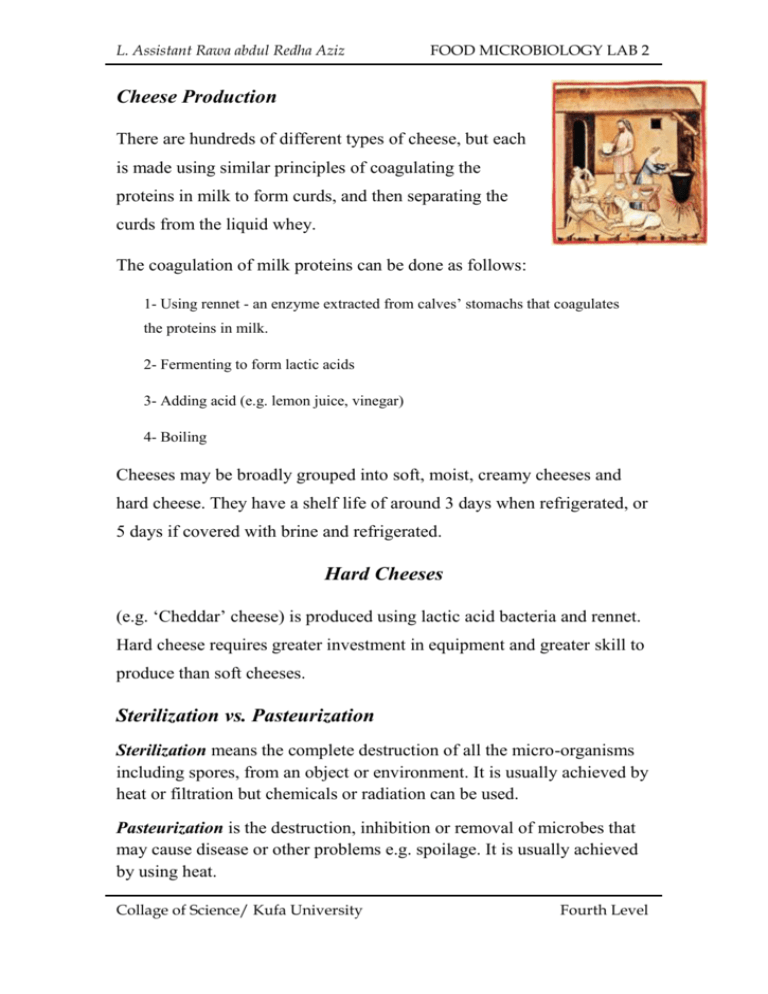
L. Assistant Rawa abdul Redha Aziz FOOD MICROBIOLOGY LAB 2 Cheese Production There are hundreds of different types of cheese, but each is made using similar principles of coagulating the proteins in milk to form curds, and then separating the curds from the liquid whey. The coagulation of milk proteins can be done as follows: 1- Using rennet - an enzyme extracted from calves’ stomachs that coagulates the proteins in milk. 2- Fermenting to form lactic acids 3- Adding acid (e.g. lemon juice, vinegar) 4- Boiling Cheeses may be broadly grouped into soft, moist, creamy cheeses and hard cheese. They have a shelf life of around 3 days when refrigerated, or 5 days if covered with brine and refrigerated. Hard Cheeses (e.g. ‘Cheddar’ cheese) is produced using lactic acid bacteria and rennet. Hard cheese requires greater investment in equipment and greater skill to produce than soft cheeses. Sterilization vs. Pasteurization Sterilization means the complete destruction of all the micro-organisms including spores, from an object or environment. It is usually achieved by heat or filtration but chemicals or radiation can be used. Pasteurization is the destruction, inhibition or removal of microbes that may cause disease or other problems e.g. spoilage. It is usually achieved by using heat. Collage of Science/ Kufa University Fourth Level L. Assistant Rawa abdul Redha Aziz FOOD MICROBIOLOGY LAB 2 ((Steps of Cheese Making)) Collage of Science/ Kufa University Fourth Level L. Assistant Rawa abdul Redha Aziz FOOD MICROBIOLOGY LAB 2 Yoghurt Production Yoghurt is a sour milk product due to the presence of lactic acid yielded by bacteria that underwent fermentation. Bacteria that are commonly used in yoghurt production are Streptococcus thermophilus and Lactobacillus bulgaricus which break down sugars in the milk and produce lactate or lactic acid as by-product. STAGES IN THE MANUFACTURE OF PROCESSED YOGHURT Starter Culture Two species of bacteria Lactobacillus bulgaricus and Lactococcus thermophilus in approximately equal proportions, are used to make yoghurt. Commercial producers pasteurize and homogenize the milk before adding the starter. After stirring, the mixture is then incubated for 3-6 hours at 40-450C. Collage of Science/ Kufa University Fourth Level L. Assistant Rawa abdul Redha Aziz FOOD MICROBIOLOGY LAB 2 At this temperature the two bacteria have a mutually stimulating effect on one another. Proteolytic enzymes from L. bulgaricus break down milk proteins into peptides. These stimulate the growth of L. thermophilus which, in turn, produce formic acid and carbon dioxide, growth stimulants for L. bulgaricus. As the incubation proceeds, L. bulgaricus converts the lactose to lactic acid and the pH falls to 4.2-4.4 which leads to the coagulation of proteins by lactic acid and the thickening of the yoghurt. Further processing involves the addition of flavour, colour, fruit pulp and heat treatment to kill off any bacteria. METABOLIC PRODUCTS OF BACTERIA USED IN YOGHURT MAKING Lactobacilli and Lactococcus Characterization Gram-positive facultative anaerobic Cultured on MRS medium pH adjusted to 6.2 Incubation period 30oC for 48hr. Collage of Science/ Kufa University Fourth Level
